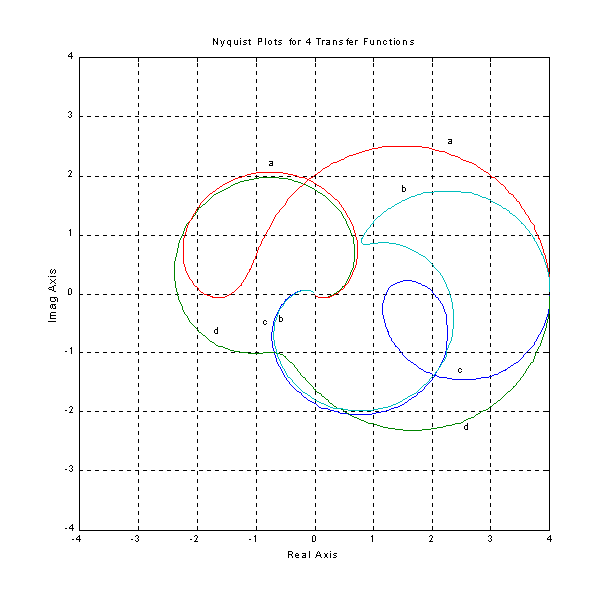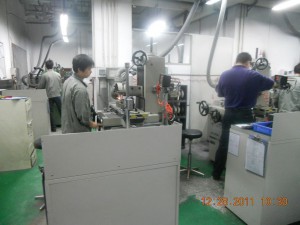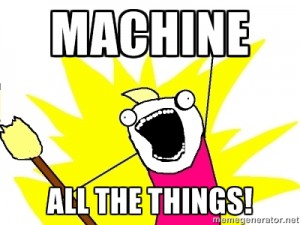Saturday, March 24, 2:10 PM Hackny
http://hackerleague.org/hackathons/spring-2012-hackny-student-hackathon/wikipages/4f6e1d1e0e3c4d0001000045
http://hackerleague.org/hackathons/spring-2012-hackny-student-hackathon/wikipages/4f6e2fda74a9980001000010
office hours: node, js, api 101, python, ?__?
judged by awesomeness and nothing else
selected apis by vote and not sponsorship
Longtail — jwplayer (flash/html) — js api.
longtailvideo.com/demo
–embedded geodata. updates vwidgets on the side. -> api working better on ipad than on the desktop. O__o
jsfiddle.net/979bS
JSON. events: { onPlan: …} –> vs popcorn ?__?
bitsontherun -> iphone on th erun video integrat w/ longtail video
===
parse.ly, zach and emmitt
Dash for publishers (semantic content) –> google analytics + higher level for online publishers
API:
1. Extract: e.g. columbia professors -> identifies all the “entities” (topic or idea) -> marks it with tags
[REDACTED], POST w/ test and returns (5-10sec) url to check status (query for working/done). Returns text with
1. -> any page
[url REDACTED]
2. ~rich structured article data API?
json, jsonp (call directly from js/ajax), and xml outputs
2 -> for articles already indexed in parsely database
ideas:
entity swapping (rep vs dem), mad libs, historical reader
=> nyc startup ecosystem, full time student
===
nytimes api, Brad
developer.nytimes.com
17 APIs
throough documentation with preview w/ api request tool.
Facets: >40 facets (complex and robust APIs)
complex in general
~does not yet support jsonp
http://www.mashape.com/apis/NY%20Times
===
aviary.com erin and ari -> web api
photo editing toosl for you as the developer to integrate.
aviary.com/ios (sdk) -> very simple to use. crop, rotation, effects … want us to build next instapaper etc. Not intrusive (blended into app)
very quick integration, cross platform (web, ios , android)
www.aviary.com/webwww.aviary.com/code-generator (including a js w/ editor)
they will post to our app (and we decide how implement security)
www.aviary.com/ios
android: has sample app in ADK download
www.aviary.com/android-documentation
you choose tools available in app
api@aviary.com
===
movable ink.com
=> #hackny irc.freenode.net
put dynamic content into email (generate content that goes into email when opened). (crop tool to pull from website).
e.g. bottom of email: shows progress of selected donorchoose project. donorsig.com/capture
htrml5 support, streaming from site into email o___O (beta)
rest api prolly not needed. movableink.com/api/docs
===
4sq, aditya
very powerful, used even for own web client internally so you have almost as much power
very easy to setup and get going quickly = good choice for beginners
users, venues, tips
developer.foursquare.com/apishowcase or something
-> timehop ^__^
oauth, restful
also many libraries for almost any language ^__^ yay wrappers
===
ordr.in, felix (sp?), david
stupdendously easy way to add food ordering to hack (rich structured data to menu and can submit food delivery orders)
e.g. ordr.in/devleopers/restaurant
there are also utility apis around restaurant (saved user profiles, restaurant taxes, etc.)
restful, jsonrific
yep libraries
===
tumblr. dereck, john? bunting
blog.johnbunting.me/api
json console to mess with
ruby client
client.posts(“onetinyhand.com”, false. {:limit => 1})
“give me the first post on here”
client.posts(“onetinyhand.com”, false. {:tag => “kim jong il”})
will be open sourcing ruby client (not tested)
===
10gen, francescapasha, barriesegal
prezi ~
mongodb, nosql, document orientd, open source, schemaless DB
relational databases mostly in DB class.
docs nested in collections, great for working things out on the fly. eg hackathon.
rdbms (tradtl) vs mongo
table -> collection, row > document, column > field, index>index, join (takes a long time)>embed** (relations between difft collections, amke documents fster), can add as go.
create relationships between data
use mydb
var hackathon = “authoer”:”fra”, “title”: “hack”};
db.blog.save(hackathon);
db.blog.find();
_id –> autogenerated
db.blog.find({author: asf})
.fin().sort(….)
db.blog.update(P_id: post.id{ …….
query operators and update modifiers
db.blog.remove() (remove all objects)
db.blog.drop() (drop entire collection)
there is shell embedded in try.mongodb.org
tutroail, next, …. ….
api.mongodb.org (drivers for different langs. python on of the strongest) -> python OH knows some mongoDB
===
etsy API, christopher
800k active users / 13 mill active listeners
100+ countries
14k+ people to make living
cando:
search by color, listing info, put up listing, anything can do by web
can access own sales data (metricly!)
etsy.com/developers
-> create new app on the left, or documentation -> api ref
openapi.etsy.com/v2/listing/active?keywords-bike_valet&apikey=…….
&includes=Mainimage
etsyonsale
etsy-tv.heroku.com
wangsandneeds.me (twitter crawl)
scrollsy.com
codeascraft.etsy.com (blog)
@etsyapi
===
nodejitsu, charlie, paolo
(10+ people on irc often)
@indexzero, @hij
loves open source, node.js
anything community -> os
company/corporation -> our ip, proprietary
js low barrier to entry, sophisticated network
nodjitsu, public cloud ~__~ “jitsu” is public command line for deploying
develop.nodejitsu.com (deploy from web)
mongo or couch, … can choose database
smart snapshots (git tags -> tarballs) (yay rolling back producting bugs)
do not need git (do all version management for you)
github.com/nodejitsu
github.com/flatiron (after ny building) –> decoupled tools for logging, routing, … very convenient for getting started with
~node-chat, MIT license
clone, cd it.
node server/server.js (uses socket.io, allows realtime web porgramming)
localhost:3000
yay~~ talk to self on localhost…..
npm install jitsuyou should be donig it right now (npm = package manager for node
in that dir, jitsu deploy (reads package manifest) & need extra properties, which prompted for. (0.6.x) = latest version of js
hackny-chat.nodejitsu.com
gimmesomebeta.nodejitsu.com
hackny-chat.jit.su (soviet union)
===
ambassador’s email: s2012ambassadors hrm at hackNY.org
===
donorschoose NYC, oliver, cto
nonprofit, website where public school teachers push best ideas for schools they can’t afford, founded by public school teacher in teh bronx, does actually work (35 mill donations, delivered over 120 mill since inception, 6 mill students). yep, microfinance (real people donating small amounts)
garage developers on their own time will build things and make it moar awesome
~> naive about reaching out. at beginning, no one used it @__@
but now strategic asset
25 mill projects ~ yay long tail properties (topical and geographic diversity of proposals)
can query by location, zipcode, radiate out, or by latlong, point radius / boudning box,
classroom subject, e.g health and wellness
teachforamerica corps members
keyword search
returns:
subject area in
amount needed, teachers name, locale info, photo, short essay by teacher, can support transactions (talk offline), campaign level donations (impact statistics in real time)
~starbucks: w/ wifi: show nearest classroom project to where they are
~sonic: ask customers to pick projects they donate to
~chevron: based on where pumped gas, fund projects nearby
~amazon?: willing to buy one give one, classroom project which requst same thing
~ email sig: based on sender, choose which projects by sender’s whims (music, bronx)
~ running commitments for donations
~ 4sq mashup, recs by places visited in the past
and don’t care if we are the main focus or not, just build things awesome 🙂
donorschoose.com -> play around w/ frontend search
api is essentially programmatic access to frontend
demo api key is full featured (no need to wait)
and has “prepaid” gift cards if we want to testdrive the donation process
===
samir yay at nextbigsound.com for api key
next big sound
analytics and insights for the music industry
premium products: dashboard to understand impact of key events on performance (key metrics)
methods: artist search, profiles, metrics
returns json, can query artist or
bookmarklet ->
api3.nextbigsound.com
===
~kickin?__?~ api not present ^__^
==
hackerleague page for listing!!!
ambassadors:
jared
48hrapps, hacklympics, boxxy?
john, tumblr, python, ruby, php, mysql, redis?, mongo…
rob specter, twilio, python, js, ruby
john 2?, cofounder of hackerolympics, 48hrapps
zach, parsely
aditya, 4sq, data science, not js (python, perl)
john goodwin – social data and analysis, cofounder of a company
dan from something, rby on rails,
===
5pm, oh, nodejs, dan rm201
6pm, api 101, rm102
5:30 rails
7pm python
demo on sunday -> make sure project on hackerleague




![how do I machine shop [at MIT]?](https://orangenarwhals.com/wp-content/uploads/2012/03/tardis2-550x372.jpg)









